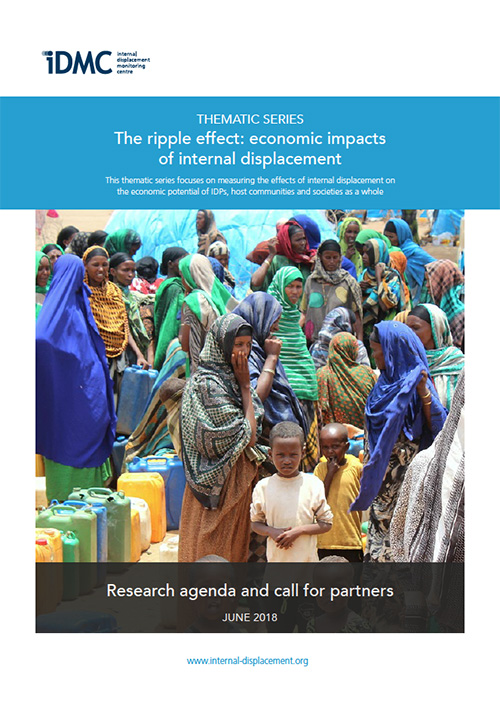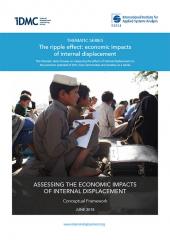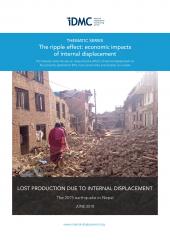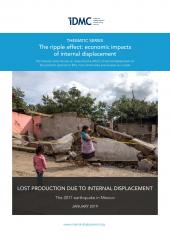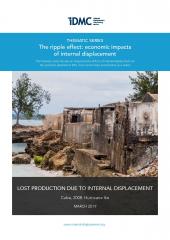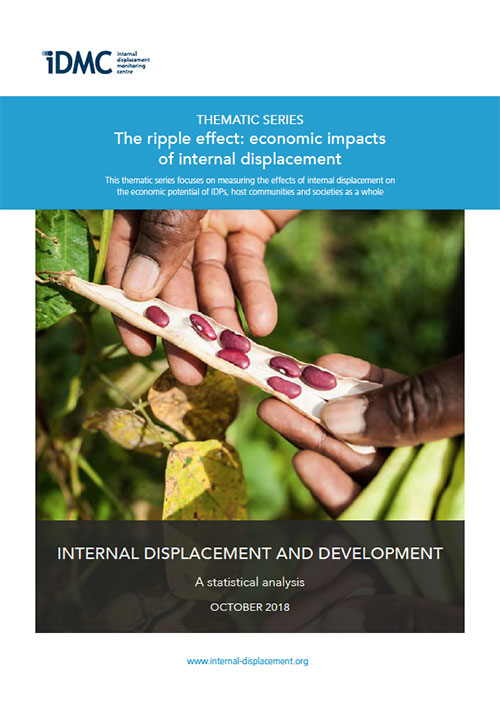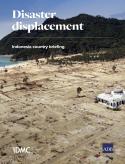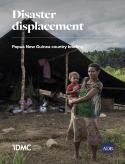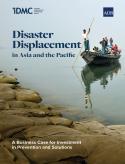Anecdotal evidence has repeatedly highlighted the links between displacement and low levels of socioeconomic development, and the need for governments to invest in preventive solutions if they want to ensure inclusive and sustainable development. More systematic, quantitative evidence is needed to demonstrate the short and longer-term economic impacts of internal displacement and generate the political will to address the phenomenon.
This thematic series aims to measure the effects of internal displacement on the economic potential of IDPs, host communities and societies as a whole, bridging the knowledge gap through innovative research, partnerships with experts and practitioners from a wide range of disciplines and consultations with policy stakeholders concerned with economic development.
Download the introduction (PDF, 0.4MB) in English, French or Spanish.
Conceptual Framework
Uncovering the hidden cost of internal displacement would help make the case for increased country-led investments in risk reduction and durable solutions. Past studies have assessed the impact of international migration and refugee flows on work and other singular dimensions such as health or education. Others have attempted to assess the socioeconomic impact of cross-border or internal displacement at the local level.
However, a systematic, quantitative estimate of the overall impact of internal displacement on an economy has yet to be made, and doing so requires new concepts and methods. This document introduces a new conceptual framework to assess the economic impact of internal displacement comprehensively across dimensions, time, countries and displacement contexts.
Download the conceptual framework (PDF, 0.3MB) in English, French and Spanish.
Lost production due to internal displacement
Beyond the losses caused by a disaster’s destructive force, less direct consequences can also impact the economy. One is the inability of people displaced by the disaster to continue their habitual work. By disconnecting people from their productive activity for days, weeks, months or even years, internal displacement reduces economic production.
In the case of the earthquake that hit Nepal in 2015, this reduction amounted to nearly two per cent of the country’s GDP, or $406 million.
In the case of the 2017 earthquake in Mexico, internal displacement led to an estimated reduction in economic production of $160 million, or 0.01 per cent of Mexico’s GDP.
In the case of the 2008 Hurricane Ike that hit Cuba, internal displacement let to a loss of $131.7 million, or 0.22 per cent of the island's GDP.
Download the Nepal case study (PDF, 0.6MB)
Download the Mexico case study (PDF, 0.4MB)
Download the Cuba case study (PDF, 0.4MB)
Multidimensional impacts of internal displacement
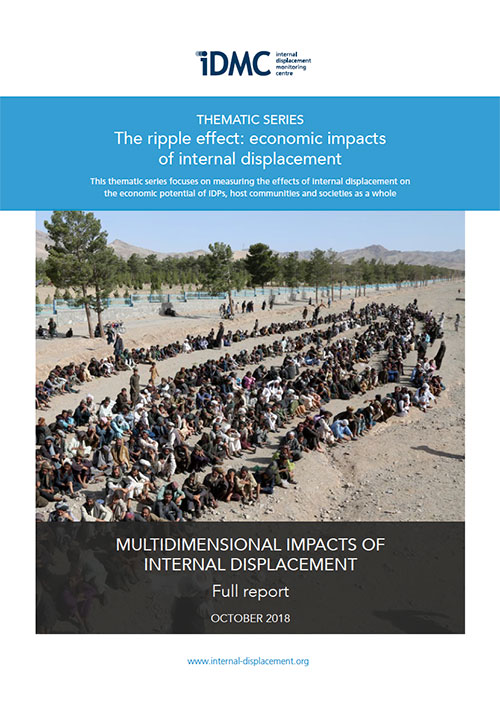
Internal displacement affects the lives of displaced people, their host communities and those they leave behind in many ways. We identified seven dimensions that need to be considered - health, livelihoods, education, housing and infrastructure, security, the environment and social life. This report presents the results of a systematic review of nearly 1,000 publications on the impacts of internal displacement in each of these dimensions.
Our analysis highlighted recurring effects that must be assessed more systematically, but also knowledge gaps where more research is needed. It confirmed the variety and intensity of internal displacement’s repercussions and showed how they all relate to each other.
As part of IDMC’s research programme on the economic impacts of internal displacement, we will build upon this work to develop new tools to assess these impacts’ consequences on the economy at the individual, community and national levels.
Download the executive summary (PDF, 0.5MB) in English, French and Spanish.
Download the paper (PDF, 1.9MB)
Internal displacement and development - a statistical analysis
The link between internal displacement and socioeconomic development has been discussed in a number of publications but never studied systematically. This paper presents the key findings of a statistical analysis highlighting correlations between the number of new internal displacements recorded by IDMC in conflict or disaster settings and approximately 1,500 socioeconomic indicators published by the World Bank.
Although it does not identify which indicators represent drivers or impacts of internal displacement, or relate to other potentially less visible variables, this analysis demonstrates the need to consider not only the economic, but also the social and environmental dimensions of development and highlights areas of interest for future research.
Understanding how socioeconomic development relates to internal displacement, as a driver or as an impact, can help governments assess displacement risk, improve crises prevention and response plans, track progress in reducing the severity of displacement situations, evaluate the effectiveness of policy decisions and support national accountability.
Download the statistical analysis (PDF, 1.76MB)
Unveiling the cost of internal displacement
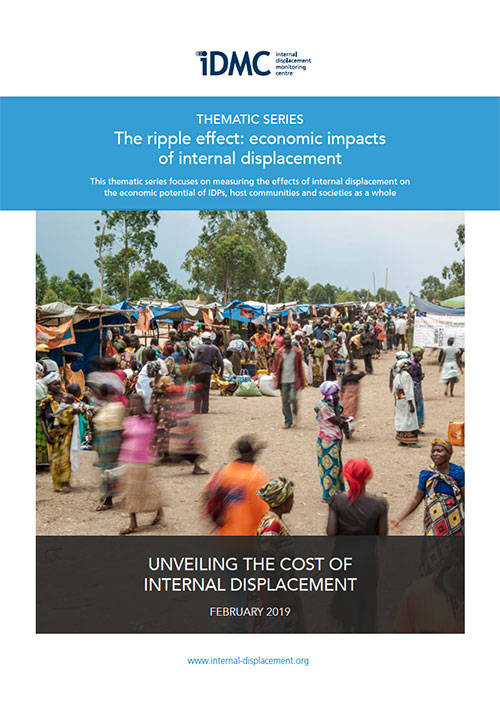
Internal displacement can limit affected people’s ability to contribute to the economy and generate specific needs that must be paid for by IDPs, their hosts, their government or other aid providers. This report presents our first estimates of the financial impact of major displacement crises in eight countries: the Central African Republic, Haiti, Libya, the Philippines, Somalia, South Sudan, Ukraine and Yemen. Using publicly available data and an original methodology, this report assesses the costs and losses associated with internal displacement’s most direct consequences on health, shelter, education, security and livelihoods.
Although they uncover only a fraction of the economic impacts of internal displacement, these estimates amount to a noticeable share of the countries’ GDP. Multiplying the average impact per IDP per year ($310) to the total number of IDPs recorded across the world - 40 million as of the end of 2017 - would amount to nearly $13 billion. Though more research is needed to analyse more countries and account for more impacts, this report already points to the risk internal displacement represents, not only for security and human rights, but also for national development.
Download the paper (PDF, 1.4MB)
Points of no return - estimating governments' fiscal resilience to internal displacement
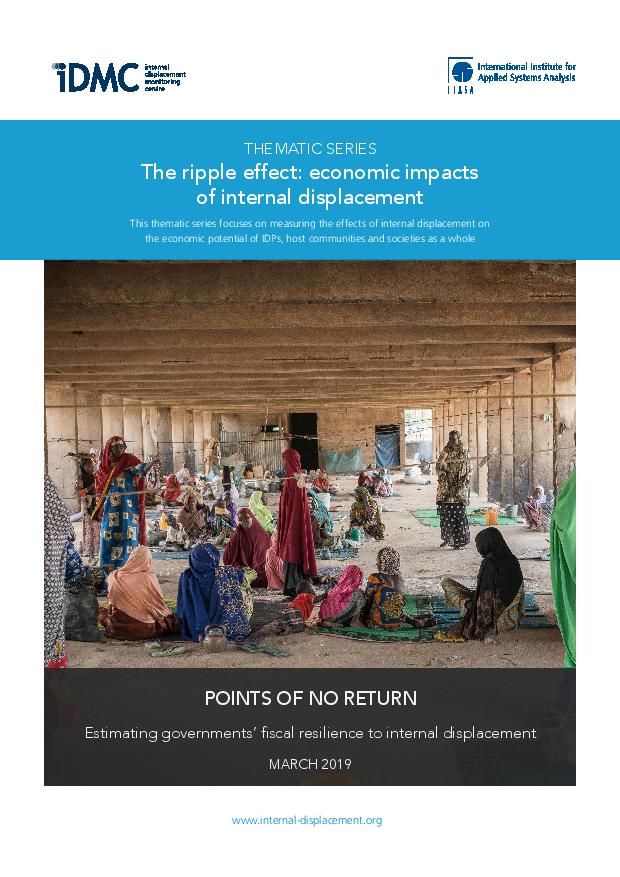
This paper estimates the fiscal gap that governments of countries affected by internal displacement may face because of future displacement crises. In 2018, IDMC partnered with the International Institute for Applied Systems Analysis (IIASA) to produce the first assessments of the economic impacts of internal displacement. The methodology used for this new paper build upon IIASA's previous work on Catastrophe Simulation modelling and on IDMC's estimates of the economic impacts of internal displacement and model displacement risk in the context of sudden-onset disasters and Disaster Displacement Risk Model.
One of the main objectives of this research is to inform budget and development plans by anticipating contingent liabilities associated with internal displacement.
Download the paper (PDF, 1.2MB)
A framework for measuring the impact of internal displacement on income
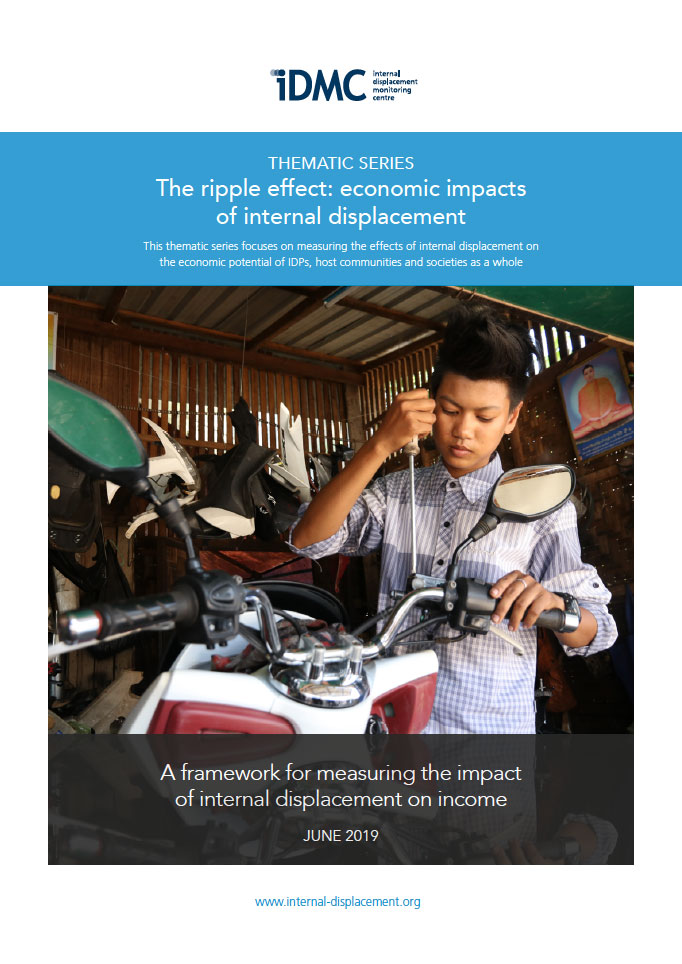
Internal displacement can affect the lives of people forced to leave their home because of conflict, violence, climate change or disasters, in many ways. Their housing, access to infrastructure and education, health, social life, security and environment change and often degrade. Displaced people often lose their livelihoods, as a result of being pushed away from their work place or source of income. Some experience months or years without the means to make a decent living.
Loss of livelihood can have repercussions on the ability of displaced people to meet their needs and disrupt access to services such as healthcare and education. It can also damage their social life and impact their mental health and wellbeing. IDMC studies have estimated internal displacement triggered by specific events in Nepal, Mexico and Cuba cost the three countries hundreds of millions of dollars. In an analysis of the economic impacts of internal displacement in eight countries, loss of livelihood was found to be the main financial burden, close to health and housing costs and far ahead of security and education costs.
These findings are concerning, because they are underestimates. They consider only the most direct consequences of internal displacement on the income of displaced people when they are unable to continue their previous activity. They do not take into account impacts on the host community or on the broader production system of the affected area. This paper presents a wider framework to evaluate the impacts of internal displacement on income in the host economy.
